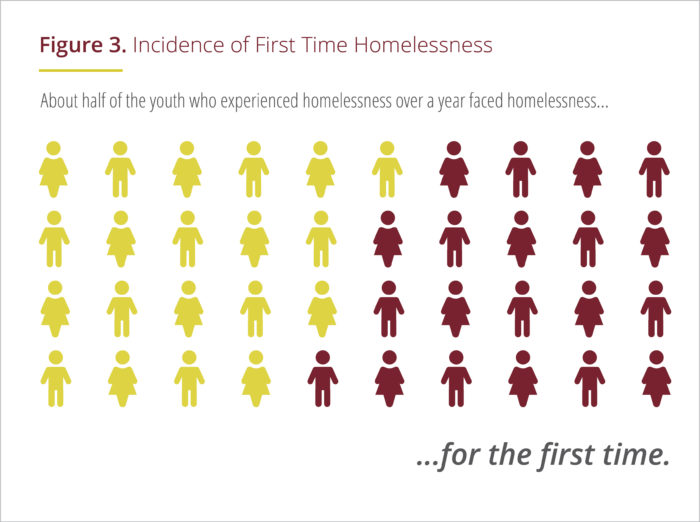One in 10 Young Adults Experience Homelessness During One Year

In this groundbreaking study, the prevalence of youth homelessness was found to be one in 10 among adults ages 18-25 and one in 30 among youth ages 13-17. The study demonstrated the diversity of experiences among the youth, and the need for targeted strategies to prevent and address youth homelessness.
What We Did
Chapin Hall conducted a survey of more than 26,000 American households in 2016 and 2017 to determine the prevalence of youth homelessness. Adults whose households included youth and young adults ages 13-25 over the year and respondents who were ages 18-25 were interviewed. The respondents answered questions about youth experience of homelessness broadly, including sleeping on the streets, in shelters and couch surfing. The survey also collected information on the characteristics of youth experiencing homelessness.
What We Found
Youth homelessness is a broad and hidden challenge: Over a 12-month period the survey found that one in 10 young adults ages 18-25, and one in 30 youth ages 13-17, experienced a form of homelessness over a 12-month period.

Other findings include:
- Youth homelessness involves diverse experiences and circumstances: Youth face a variety of situations, acuity and risk levels, and duration of events.
- Prevention and early intervention are essential. About half of the young people in the study who were homeless experienced homelessness for the first time in their lives
- Youth homelessness affects rural and urban areas alike: Youth in rural, suburban and urban counties experience similar rates of homelessness.
- Some youth are at greater risk of experiencing homelessness: These include those who haven’t graduated high school, are unmarried parents, low-income, LGBT, and African American or Hispanic.
What It Means
Congress needs to fund tailored programs and services to address the scale of youth homelessness. Local, state and national prevention strategies and resource are essential. Youth in rural areas need a strong set of tailored supports, which can be targeted through the Runaway and Homeless Youth Act and other existing legislation. Subpopulations of youth at greater risk require targeted strategies for prevention and response.



 Thank you for your interest in Chapin Hall’s research. Please share some information to access this file.
Thank you for your interest in Chapin Hall’s research. Please share some information to access this file.